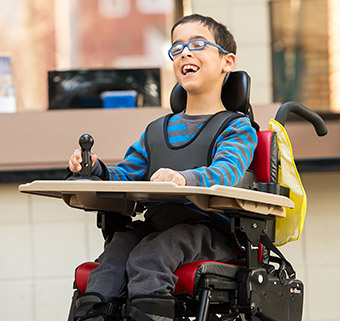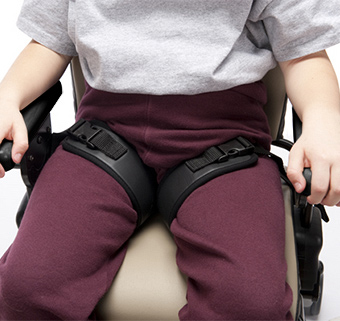Teaching Weight Acceptance with the Rifton Activity Chair
| January 2020 Beyond the comforts of the sofa or the academics of a classroom, sitting is a learning position – for motor skill building. For those with disabilities that limit standing and walking opportunities, this means engaging in seated postures and activities that challenge core stability, endurance, trunk and head control. And the start of the learning process always begins with transferring out of a supportive wheelchair and into an active seating system in order to gain the most benefit.
Beyond the comforts of the sofa or the academics of a classroom, sitting is a learning position – for motor skill building. For those with disabilities that limit standing and walking opportunities, this means engaging in seated postures and activities that challenge core stability, endurance, trunk and head control. And the start of the learning process always begins with transferring out of a supportive wheelchair and into an active seating system in order to gain the most benefit.
The Rifton Activity Chair is an adaptive chair used in special needs classrooms and adult day habilitation facilities (and, increasingly, in the home) where seating goals often focus on the basics – anterior seat tilt to teach core stability and reaching strategies, or gradually reducing trunk support to prompt independent head control. Other seating goals, however, are entirely resourceful. One such goal is using an adaptive chair to teach weight-bearing through the lower extremities.
Many therapists use anterior seat tilt to cue sit-to-stand transfers and build on weight-bearing skills already in place. But what if weight-acceptance is non-existent? What if you’re working with children who cannot stand or put their feet down in a gait trainer?
The concept stems from the conventional sitting posture in which the feet are planted on the floor to stabilize and balance the body. In an adaptive chair, tipping the seat into anterior tilt brings the individual’s center of gravity forward. The body responds naturally then, pressing on the feet to prevent pitching forward and keep the pelvis centered in the chair. When this happens, weight is taken through the ball of the foot. Another response is to keep the hips back in the chair, accomplished by as much anterior pelvic tilt as the individual can tolerate. This kind of positioning can produce great results, and the key is to repeat it over and over.
Julie Sues-Delaney, PT and Program Director of MOVE, a program that teaches life-skills to children and adults with special needs, notes that initially some children tolerate the position for only short segments – fifteen seconds – and this is what causes therapists to stop trying. But, she cautions, it is well worth persisting.
While working on weight-bearing in anterior tilt, you might try placing a table in front of your clients so they can rest their arms on it. This helps with stabilizing the core and trunk and maintaining an upright position without relying on butterfly harnesses or straps. The position is safe, and reducing dependency on straps allows your clients to gain awareness of their body and their capabilities toward actively engaging their arms and core muscles to maintain positioning. Again Julie notes, as a secondary benefit, head control emerges and posture persists for longer periods of time. This, in combination with improved weight-bearing abilities, has further potential for re-introducing a stander or gait trainer.
Of course, when teaching weight-bearing, placing the feet directly on the floor is the most task-specific, requiring less transfer of skill later on. However, it is possible to use a footboard when this is not possible. The Rifton Activity Chair now comes with a new footboard that can flip up and swing back out of the way when performing transfers onto the floor. Or if the footboard is needed, additional height and angle adjustment assure adequate contact with the feet at all times.
All this is simply to say that motor skill learning occurs in many different environments and postures. Maximizing every opportunity to introduce new skills or review old ones brings the goal of independent mobility one step closer.







